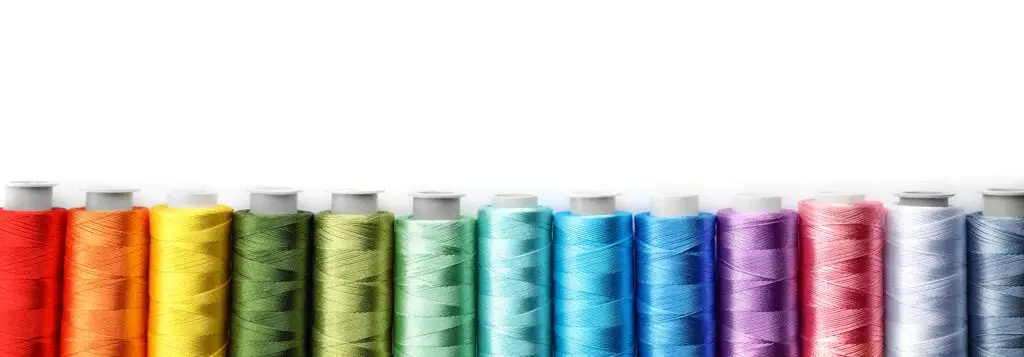
When you first enter a sewing supply shop you may be amazed by the range of threads there are to choose from. It’s difficult for a beginner to know what to choose. For basic sewing it doesn’t matter too much, but when you start working with more challenging fabrics, or when you’ve learned the ropes and want to start producing higher quality items, the right thread can make all the difference.
Qualities to Consider
Choosing the right thread requires an understanding of certain basic thread characteristics:-
- Strength – Threads vary enormously in strength. The standard machine and hand sewing threads you’ll find in your local supply shop generally won’t take much strain. If you’re sewing tough fabric that’s likely to be under pressure, you’ll need something stronger. Test thread by winding it once around your hand and flexing your thumb to see if you can snap it.
- Smoothness – If you’re working with fine fabrics, fabrics prone to bobbling, or shiny fabrics, you’ll need a very smooth thread. If you want your thread to have more grip and resist being pulled, choose a rougher thread. Don’t rely on your eyes to tell the difference – the most effective way is to run it across your lip.
- Consistency – Cheaper threads are likely to be more roughly woven, meaning that they’ll bobble in places and be fragile in others. This can lead them to break in your machine, though they’re often quite adequate for hand sewing. For high quality work, choose a thread with the same level of smoothness all the way along.
- Thickness – Threads can be purchased in a variety of thicknesses. You’ll need a fine thread for delicate or shiny fabrics, but a thicker thread is more suitable for decorative work such as embroidery. Thicker threads are less likely to pull loose when used in loose weave fabrics.
- Elasticity – A thread with a bit of stretch will cope better with short-term stress and is, of course, the ideal choice if you’re sewing stretchy fabric. Establish elasticity by using a ruler and seeing how far one inch of relaxed thread can be stretched along it. You can then compare this with the fabric you want to use.
- Colour – This might sound obvious, but what should you use if you want to sew fabric with a pattern such as black and white stripes? Where two or more colours are present in equal quantities, the trick is always to opt for the darker colour, because the human eye is sharper at spotting pale objects on a dark background than dark objects on a pale background.
Before you buy your thread, consider whether you want it for hand sewing or machine work. All other considerations aside, machine threads generally need to be rougher and stronger in order to keep from breaking.
Basic Thread Choices
Since the development of artificial fibres in the 1930s, the range of threads available for sewing has expanded spectacularly. Most of those you’ll now find in your local supply shop are blends, bringing together the best qualities of different types.
Cotton remains one of the most popular choices because it is cheap, relatively hard wearing and can be used for a wide range of tasks. Many people also like it because it has a low environmental impact. However cotton blended with polyester or acrylic fibres is cheaper and is better suited for some tasks, such as working with shiny fabrics.
When it comes to lightweight, highly flexible threads with a lot of strength, you can’t beat silk. It’s ideal for a wide range of sewing tasks; however it is also expensive. Pure nylon threads can often make an effective substitute. Unfortunately they can become brittle if they’re often washed and can also lose their colour over time.
For a wide range of colours, the best thread choice is undoubtedly polyester. It’s also strong,elastic and resistant to fraying, making it a great choice for everyday use.
There are also lots of speciality threads you can consider for decorative sewing. The softness and flexibility of rayon make it great for embroidery, and you can also get metallic threads to add a little sparkle to the things you sew, though it’s best to avoid using them where they’ll be in constant contact with skin, as they can cause allergies.
As you’ll see, there’s a lot of consider when choosing the right thread, but making a good choice can really improve your sewing experience.
